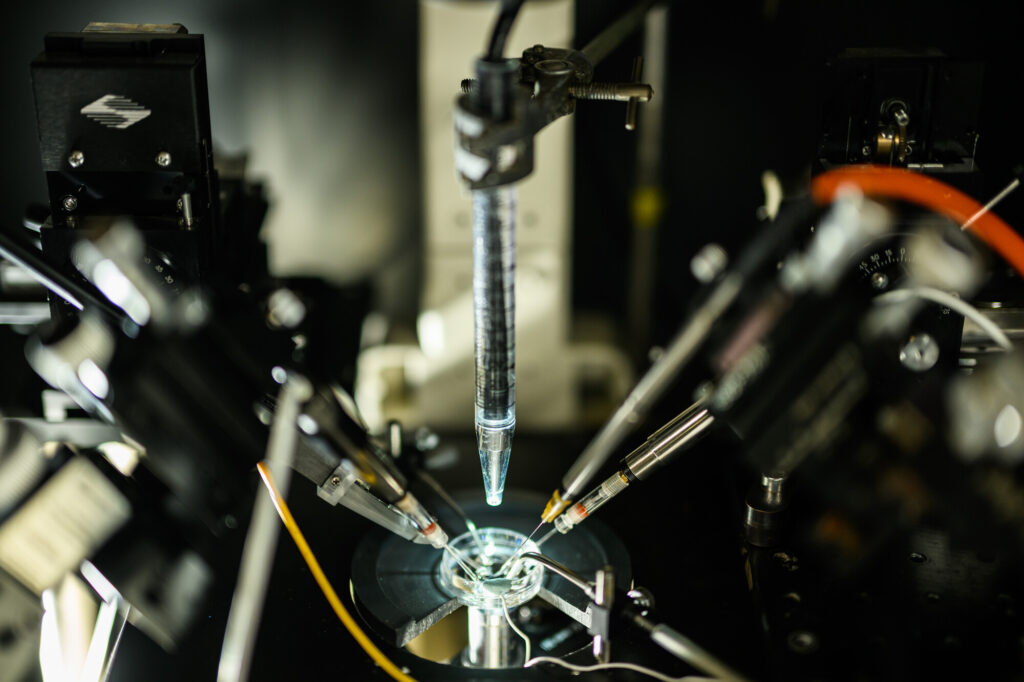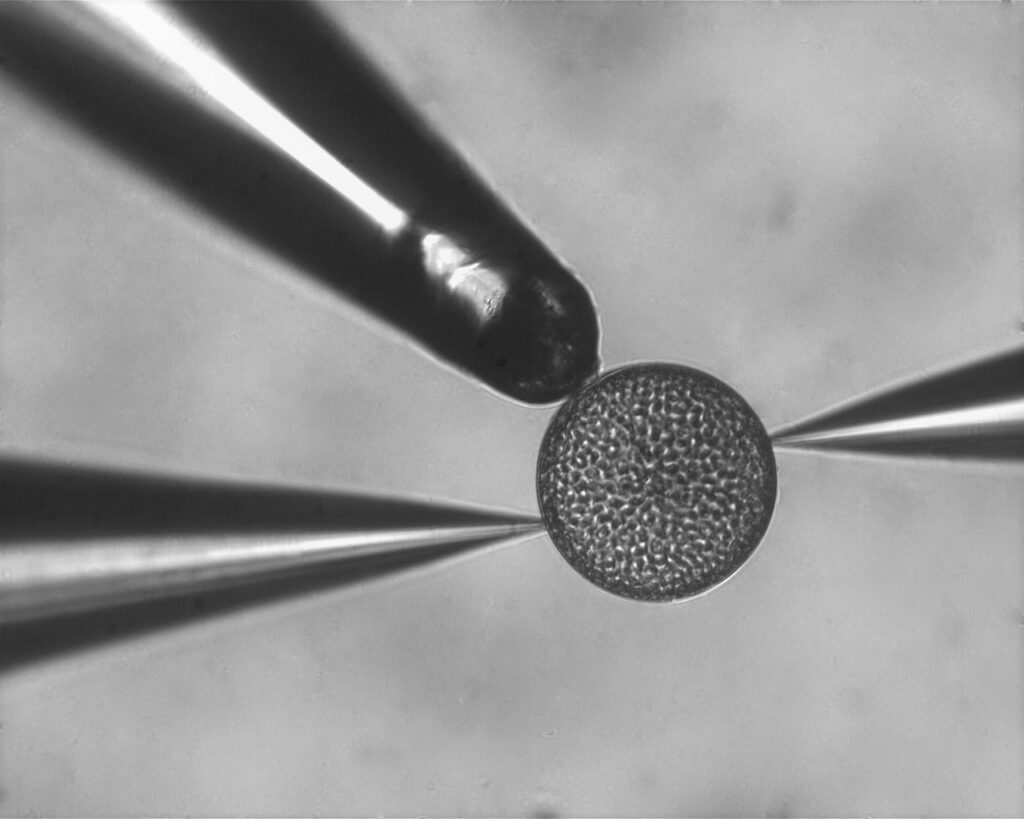
The ocean contains a widespread group of single-celled algae called diatoms which play a significant role in the global carbon cycle.
As microscopic photosynthesising organisms (phytoplankton), diatoms transform light energy from the sun into chemical energy, fixing carbon dioxide and producing oxygen (primary production).
Diatoms are responsible for up to 40% of marine primary productivity – playing a major role in removing carbon dioxide from the atmosphere.
Due to the low concentration of carbon dioxide in seawater, diatoms have evolved CO2 concentrating mechanisms (CCMs) to mitigate carbon limitation during photosynthesis, allowing them to utilise the large pool of bicarbonate, which is the predominant form of dissolved inorganic carbon in seawater. The enzyme carbonic anhydrase is a major aspect of the CCM, and acts to rapidly accelerate the conversion of bicarbonate to carbon dioxide. External carbonic anhydrase (eCA) is released at the periphery of diatom cells and enhances the supply of carbon dioxide at the cell surface, which is subsequently taken up during photosynthesis.

While much research has looked at the connection between eCA and changes in carbon dioxide availability, little is known about how eCA contributes to carbon dioxide supply following changes in the demand for carbon (i.e. at different rates of photosynthesis).
Researchers from the Marine Biological Association (MBA) and University of Georgia examined how changes in photosynthetic rate influence the requirement for eCA in three centric diatoms of contrasting cell size.
In this latest paper published in the Journal of Phycology, data demonstrates that changes in both carbon demand and cell size strongly influence the requirement for eCA in diatoms, with larger cells showing the highest requirement for eCA at high rates of photosynthesis. Cell size and photosynthetic rate will therefore be key determinants of the mode of dissolved inorganic carbon uptake.
Lead author Dr Matthew Keys said: “Our study provides new insights for the dynamic role of the enzyme external carbonic anhydrase in the supply of CO2 for diatom photosynthesis. This has important implications for future studies examining the operation of microalgae CO2 concentrating mechanisms among species, or at different seawater carbonate chemistries.” For more information read the full open access research article here: https://onlinelibrary.wiley.com/doi/10.1111/jpy.13416
This research is also included in the journal’s Algae Highlight and is featured on the front cover of the February issue. The Algae Highlight draws attention to some of the important papers being published in each issue of the Journal of Phycology or elsewhere and are typically written in the form of a commentary article by a specialist in the field.